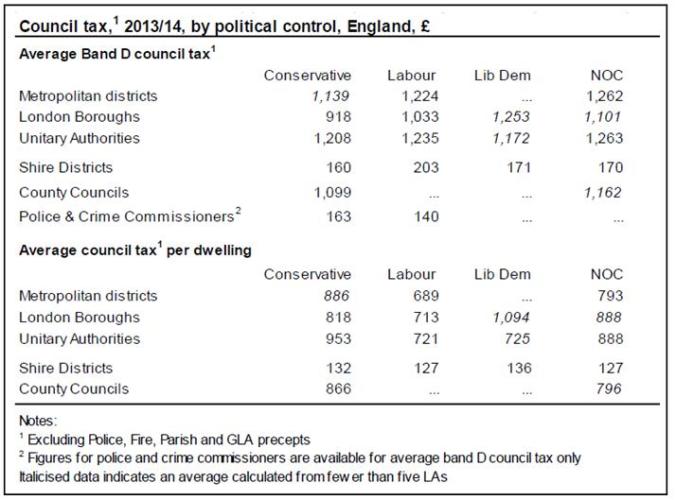One of the few perks of my first paid research job was visiting the major party conferences. This was in the early 1970s, when policies were genuinely debated, votes were taken and mattered, and leaders’ speeches didn’t have to be delivered without visible notes.
I recall particularly Harold Wilson, then Opposition Leader and past his prime, but still, it seemed to me, master in that conference hall of all he surveyed. And still, more than a decade after the man’s death, getting himself an easy ovation by quoting one of Labour Conference’s forever favourite sons, Aneurin Bevan. One such quote, used by Wilson on probably numerous occasions, was: Why look into the crystal ball when you can consult the book?
I was reminded of it this week in relation, as it happens, to the Lib Dems’ conference. There were two polls last weekend – one of Lib Dem members for the Independent on Sunday, one of Lib Dem councillors for BBC1’s Sunday Politics programme – both showing that the respondents would greatly prefer Labour, the devil they don’t really know, to the one they’re currently in coalition with.
Not exactly new news, and, moreover, entirely crystal ball stuff. Wouldn’t it be more interesting, rather than speculating about what national politicians might do in the event of a future hung parliament, to read the metaphorical book and see what local politicians have actually done when confronted with hung councils? That’s what the rest of this blog is about.
There are currently more than 50 English hung councils, or more than 1 in 7. In the majority of these (28) there are no formal coalitions, alliances or pacts at all, because they’re run by single parties as minority administrations: 16 Conservative, 7 Labour, 3 Lib Dem (Bath & NE Somerset, Stockport, Cambridge), 1 Green (Brighton & Hove), and 1Independent (Isle of Wight).
One of these – Harrow’s Conservative minority administration – came into existence only this week, but in such exceptional circumstances that, even without any significant Lib Dem involvement, it seems worth a couple of parenthetical paragraphs before continuing with the mostly more mundane happenings recounted in the remainder of the blog.
In one of many noteworthy results buried under the post-General Election headlines in May 2010, Labour, under Bill Stevenson, took majority control of Harrow LBC. Last October, Stephenson stood down due to poor health and was replaced by Thaya Idaikkadar, the UK’s first Sri Lankan council leader. At the Labour group’s AGM in May, however, he lost the group leadership to David Perry, prompting allegations of unfairness and “elements of racism”.
Idaikkadar and 8 other councillors left the Labour Party and formed their own Independent Labour Group, leaving Labour and the Conservatives each with 25 seats. Still Council Leader, Idaikkadar sacked his entire Labour cabinet and created a kind of Independent Labour-Conservative minority coalition, but with the two Conservative cabinet members holding only non-executive posts. This ended last Monday at an extraordinary (in every sense) meeting of the Council, called by the Conservative group and at which, with sufficient Independent Labour support, they elected their own leader, Susan Hall, to head a Conservative minority administration.
These were exceptional events, but in one sense they do reflect the reality and uncertainty behind the formation of any minority administration. Even where the party concerned has the most seats and is close to an overall majority, it’s still a risk, and some sort of at least informal agreement will usually be needed to get the party over the hurdle of the annual meeting, as indicated in my blog following this May’s county council elections.
Warwickshire was one example. The Conservatives had lost their majority control of the 62-member council, but remained the largest party with 26 seats. Labour were up to 22, and there were 9 Lib Dems, 2 Greens and 3 Independents. The Lib Dems and Greens wanted a multi-party rainbow coalition, but, as regularly happens in local government, Labour preferred to do business with their traditional opponents.
They agreed to abstain in the key vote at the annual meeting, allowed the Conservatives to form a minority administration, and in exchange took control of the scrutiny committees. There were accusations, naturally, of a stitch-up, but no cabinet seats were involved, so Labour could argue that they remain free to work and vote with the smaller parties to defeat any policies they wish to oppose.
A similar informal Conservative-Labour arrangement was negotiated in Gloucestershire, but in Lancashire it was the Conservatives who lost out. Labour had failed to regain their majority control, but with 39 of the 84 seats were the largest party. Sensing a lifeline, the Conservatives (35) tried talking with anyone who might be interested in forming an anti-Labour coalition. But the Independents (3) didn’t want an alliance with anyone, which left the 6 Lib Dems agreeing to support a Labour minority administration, its budget, but not necessarily anything further.
It’s by no means always, though, the largest party that calls the shots, and in arithmetical terms perhaps the most remarkable outcome of the May county elections was in Norfolk. The Conservatives were overwhelmingly the largest party – or should have been, with 40 out of 84 seats – but they were comprehensively outmanoeuvred. While their leader thought he had an agreement with the 9 Lib Dems to enable him to form a minority administration, Labour (14) and the Lib Dems had negotiated a (very) minority coalition of their own, with backing from the 15-strong UKIP group.
Here was one example, then, of the kind of arrangement most Lib Dems say they favour. There are others in Cumbria, in Broxtowe (Notts), where the two parties have a power-sharing history dating back ten years now, and, most recently and with some similarities to Harrow, in Worcester.
While most election-watchers’ attention back in May was on the county elections and in Worcestershire on Labour’s ultimately dashed hopes of winning enough seats to recreate the Lab/Lib Dem pact that had run the council in the 1990s, the heavy action was not in County Hall at all, but in the City Council’s Guildhall, where Labour staged a notable coup.
At 9.00 p.m. on Tuesday 14th May, the 17 Conservatives were running the 35-member council as a minority administration, backed by the 2 Lib Dems. Then by 10.00 p.m. they weren’t, having been dramatically ousted by a coalition of Labour’s 15 members, the single Green, and, yes, those same Lib Dems. They described their turnabout as a carefully considered “change of mind”; the Conservatives pronounced it shameless, unprincipled and considerably worse.
There are two other examples of Lib Dem/Labour partnerships. In Colchester the 26 Lib Dems are very much the lead party, so it is presumably their decision to extend their coalition to include the 3 Highwoods Independents, even though not arithmetically necessary for a majority.
In Stroud, by contrast, every vote in the Labour/LibDem/Green coalition counts. The Conservatives in 2012 were comfortably the largest party on the 51-member council and, with 22 seats, might reasonably have hoped to form a majority alliance with the 5 Lib Dems. However, Labour, though starting from only 16 seats, could and did assemble a similar majority in coalition with the 6 Lib Dems and 5 Greens: trickier but apparently more harmonious.
In all, then, there are 7 current examples of Labour/Lib Dem coalitions, compared to just 4 involving Conservatives and Lib Dems – Lincolnshire, Redbridge, Walsall, and Pendle, in all of which the Lib Dems are the minor partners and generally very much so. Add in North Devon’s Lib Dem/Independent administration, and it turns out that the Lib Dems (12) are involved in at least slightly more of these formalised local coalitions than either Conservatives (10) or Labour (9).
It is interesting that there seems such minimal enthusiasm in local government to follow the lead of the Conservative and Lib Dem parties at Westminster. As to whether it’s significant, or offers any clues at all to what might happen in 2015, the answer I’m afraid must be a resounding NO.

Chris Game is a Visiting Lecturer at INLOGOV interested in the politics of local government; local elections, electoral reform and other electoral behaviour; party politics; political leadership and management; member-officer relations; central-local relations; use of consumer and opinion research in local government; the modernisation agenda and the implementation of executive local government.


